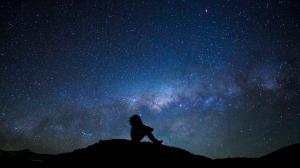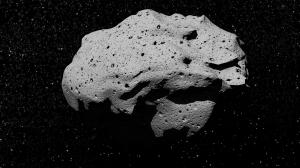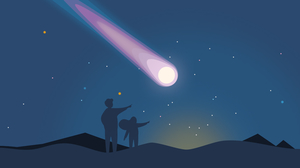In 2025, the Draconids will peak on the night between 10月8–9日 (木)
October Meteor Shower
The Draconid meteor shower, also sometimes known as the Giacobinids, is one of the two meteor showers to annually grace the skies in the month of October.
The Orionids is the second meteor shower in October. It usually peaks around October 21.
Draco the Dragon
The Draconids owe their name to the constellation Draco the Dragon, and are created when the Earth passes through the dust debris left by comet 21P/Giacobini-Zinner. The comet takes about 6.6 years to make a single revolution around the Sun.
Although the Draconids have been responsible for some of the most spectacular meteor showers in recorded history, most recently in 2011, most astronomers and sky gazers consider it to be one of the less interesting meteor showers.
What Time Does the Meteor Shower Peak?
The table is updated daily and shows the position of the Draconids radiant in the sky for the upcoming night. Use the date drop down above the Interactive Meteor Shower Sky Map to change dates.
| Draconids meteor shower for Tokyo (Night between 十月8日 (水) and 十月9日 (木)) | ||
|---|---|---|
| Time | Azimuth/Direction | Altitude |
| 水曜日 17時00分 | 335° | 69.0° |
| 水曜日 18時00分 | 321° | 62.4° |
| 水曜日 19時00分 | 315° | 54.2° |
| 水曜日 20時00分 | 314° | 45.4° |
| 水曜日 21時00分 | 315° | 36.6° |
| 水曜日 22時00分 | 318° | 28.2° |
| 水曜日 23時00分 | 323° | 20.4° |
| 木曜日 0時00分 | 328° | 13.5° |
| 木曜日 1時00分 | 335° | 7.8° |
| 木曜日 2時00分 | 343° | 3.5° |
| 木曜日 3時00分 | 351° | 1.0° |
| 木曜日 4時00分 | 0° | 0.2° |
| 木曜日 5時00分 | 9° | 1.0° |
| 木曜日 6時00分 | 17° | 3.6° |
Direction to see the Draconids in the sky:
- Azimuth is the direction, based on true north; a compass might show a slightly different value.
- Altitude is height in degrees over horizon.
How to See the Draconids
You don't need any special equipment or a lot of skills to view a meteor shower. Even though all you really need is a clear sky, lots of patience, and our handy Interactive Meteor Shower Sky Map with a visibility conditions meter to see a meteor shower, the following tips can help maximize your shooting star viewing experience.
- Find a secluded viewing spot, away from the city lights. Once at the venue, your eyes may take 15 to 20 minutes to get used to the dark.
- Dress for the weather, and make sure you are comfortable, especially if you plan to stay out long. Bring a blanket or a comfortable chair with you—meteor watching can be a waiting game.
- Once you have found your viewing spot, lie down on the ground and look at the sky. You can use our Interactive Meteor Shower Sky Map or the table above to find the direction of the radiant; the higher the radiant is above the horizon, the more meteors you are likely to see.
- Meteor showers appear to originate from the radiant, but meteors can appear in any part of the sky.



